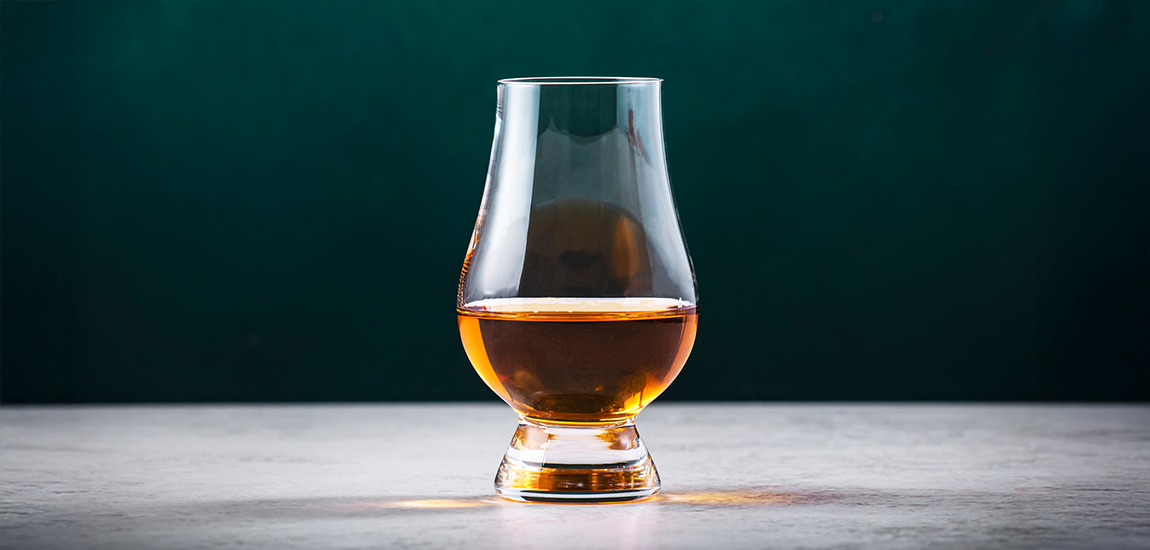The iconic Glencairn glass, the definitive whisky glass, will lose protection as a registered trademark this year. The EUIPO’s recent refusal to recognize its shape as a trademark underscores the difficulties involved in maintaining the legal exclusivity of products with timeless designs. The case reflects the limitations that currently exist in the protection of shapes in the world of industrial property.
The Glencairn Glass, the go-to glass for whisky enthusiasts, is one of the most emblematic glasses in the whisky world. The glass was developed at the beginning of the noughties by the Scottish company Glencairn Crystal and has been a benchmark in the market since it was launched, receiving several awards, including the prestigious The King’s Awards for Enterprise in 2006.
The singular shape of the glass was initially registered as a design by its creator, with protection limited to the UK, Germany, France and Italy.
The first of these registrations as a design was in the UK, where the application was filed on June 21, 2000.
Given the date on which the application was filed and since the maximum protection of this right is 25 years, the registration will expire this year, and there is no possibility of its effects being extended.
In addition to the design rights, the company that created the Glencairn glass owns several EU trademarks consisting both of the name of the glass -“Glencairn”- and also three-dimensional trademarks that represent its shape and include the inscription “The Glencairn Glass” on the base.
More recently, on September 12, 2024, coinciding with the upcoming expiry of the design registrations, the Scottish company filed an application to register the trademark purely as a figurative mark consisting of its characteristic shape, to cover goods and services in several classes.
In this case, the application for the shape of the Glencairn glass was refused ex officio by the European Union Intellectual Property Office (EUIPO) for glasses and related goods, on the grounds that it did not meet the necessary conditions to function validly as a trademark.
The refusal was specifically based on the absence of distinctive character as provided in article 7(1)(b) of Regulation (EU) 2017/1001 of the European Parliament and of the Council of 14 June 2017 on the European Union Trademark, since the EUIPO considered that the representation of the shape would be perceived as an object related to the goods in question, but not as a distinctive mark itself.
In the decision handed down on March 26, 2025, the EUIPO held as follows:
“The sign is therefore a representation of some of the goods for which protection is sought, essentially household or kitchen utensils and containers; decorative articles made from glass or crystal and containers of some others such as the beverages objected to in class 33. For the remaining products, the sign would be perceived as the representation of an object that is related to the goods and services in respect of which an objection has been submitted. For example, such as the type of images, photographs and representations of goods provided (in classes 9, 16 or 42) or the type of products for which the services are intended (such as the engraving, manufacture and customization of presentation cases in class 40)”.
Consequently, the only alternative to register a sign consisting of the shape of a product of these characteristics as a figurative mark, would be, in this case, to evidence that the intended public directly associates the specific representation of the sign with its commercial origin, giving this mark what is know as “secondary meaning”.
It is up to the owner of the mark to evidence such recognition by the relevant public when the application was filed, in the 27 countries of the EU, which in most cases, is a requirement that is nearly impossible to meet.
The difficulty in protecting a shape beyond design rights
This case illustrates the complexity of protecting a shape beyond the term of design rights. As opposed to other products that may become obsolete over time, a whisky glass such as the Glencairn glass is timeless and can continue to be important for a much longer period.
The lack of effective protection of the shape through a trademark prevents the company from having long-lasting (or indefinite) protection for a product that already enjoys immediate recognition among the relevant consumers.
In short, while design rights can protect the shape of an original product for a limited period, the fight to keep this protection alive in the long term through trademarks continues to pose a challenge.
As an alternative and cumulatively, the owners of these types of singular designs could possibly obtain protection through copyright, provided that the design or shape of the product in question can be considered an original creation recognized as an artistic work, which would afford the design exclusive legal protection.
This underscores the importance of finding protection strategies that can adapt to legal changes and an evolving market, particularly in the case of iconic products that have the potential to last a lifetime.






